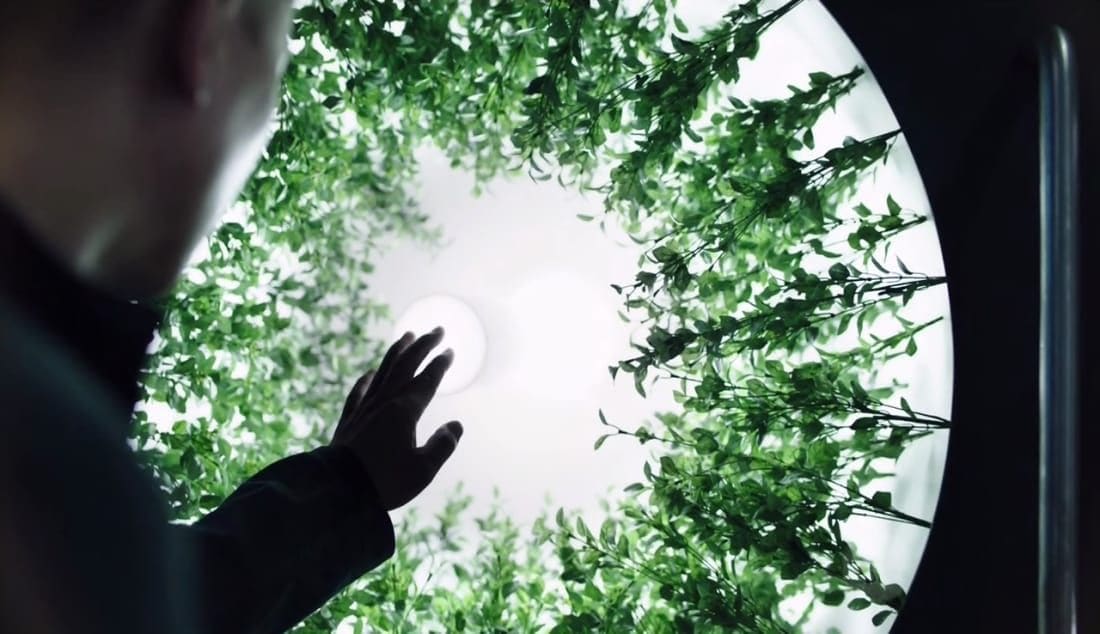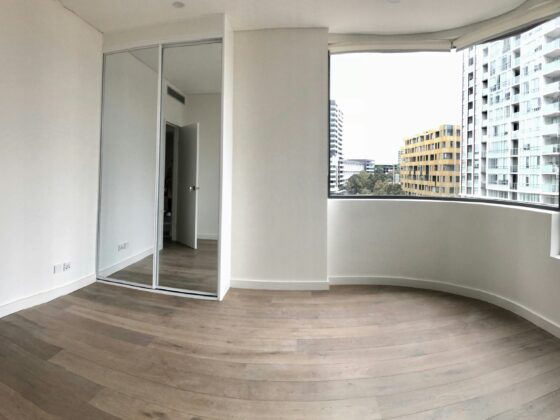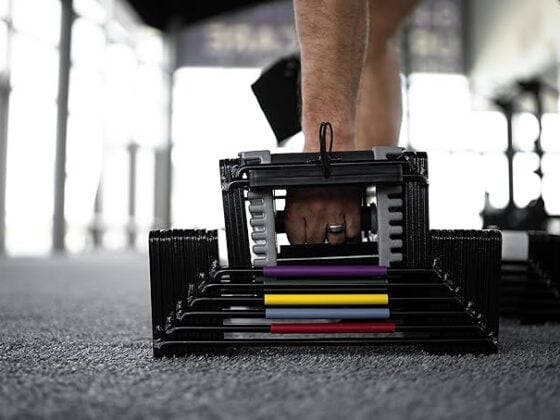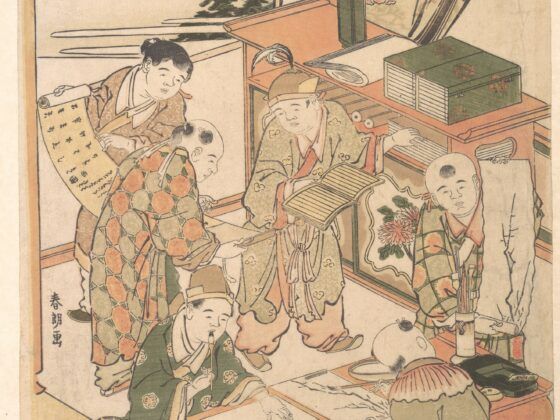
NASA conducted as study in 1989 to determine if plants could clean the air on space stations.
They found that plants do more than convert carbon dioxide to oxygen. Some indoor plants can remove pollutants from the air that are bad for your health.
Below are the 11 plants from the Nasa study in order of most to fewest in terms of pollutants cleaned.
This study was conducted to determine what plants could be added to a space station to improve air quality. This has not happened in practice. Instead, the “Veggie” or Vegetable production system is used to grow vegetables for astronaut nutrition.
Sailors from the past faced a similar problem with scurvy . Scurvy occurs by going without vitamin C for over three months.
Indoor plants have benefits beyond pollution-removal like reducing stress, increasing focus, and increasing mood. Consider putting plants where you spend the most time working. Live in a jungle for the most benefits.
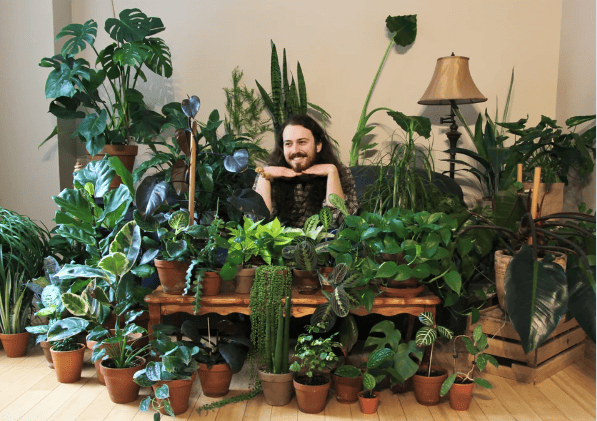
Looking at plants–looking at life–can help you be productive through mentally laborious indoor work. Plants also help your air stay fresh and not musty. Plants help to prevent your space from smelling like ass; you cannot tell if your place smells like ass until you leave for a minimum of three days then come back to your space.
We included links to purchase the plants online, but consider finding a local nursery instead, or a home-improvement store like Home depot, as shipping can be unkind to plants. Plants with poor online reviews did not receive links.
Online sources listed may give us a small affiliate commission. Sources are selected based on general reviews/company trustworthiness.
Air pollutants NASA tested for:
- Benzene
- Formaldehyde
- Trichloroethylene
- Xylene
- Toluene
- Ammonia
11 Nasa air Cleaning plants
Peace Lily

Cleans:
- Benzene
- Formaldehyde
- Trichloroethylene
- Xylene
- Toluene
- Ammonia
The Peace Lily or Spathiphyllum is a common indoor house plant with a signature white flower and yellow bulb. The Peace Lily comes from tropical regions in North & South America and is also found in parts of Asia.
The peace lily is a top pick because it cleans all of the tested pollutants from the air, sharing that distinction with only one other plant on this list.
The Peace Lily requires very little sunlight to grow. It will burn if placed in direct sunlight. Peace Lilies should have less water than more. They should be watered once a week if the soil is dry.
Where to buy:
- Local Nursery
- Home Depot
Florist’s Chrysanthemum

Cleans:
- Benzene
- Formaldehyde
- Trichloroethylene
- Xylene
- Toluene
- Ammonia
Chrysanthemums are a diverse family of flowers that are primarily located in East Asia, where the flowers are used in China for various reasons, including medicinal purposes. You can also drink Chrysanthemum tea.
Chrysanthemum flowers need full sunlight with soil that is kept moist and well-drained.
Where to buy
- Local Nursery
Bamboo palm
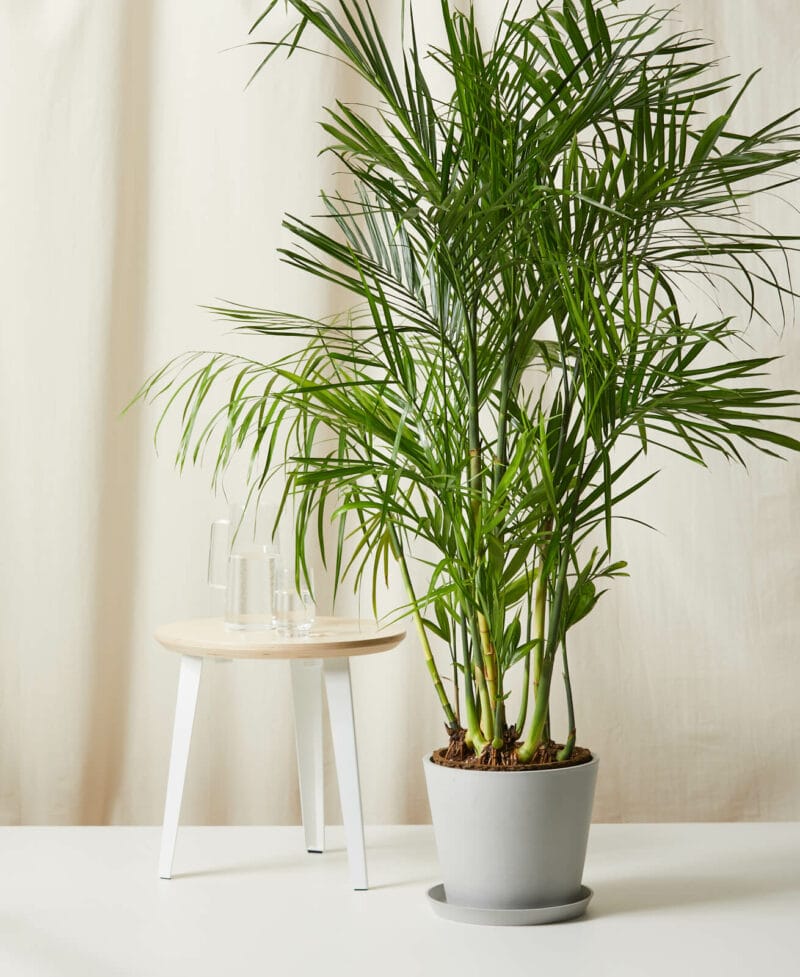
Cleans:
- Benzene
- Formaldehyde
- Trichloroethylene
- Xylene
- Toluene
Bamboo palms are native to Madagascar but are now found in parts of Central & South America. Bamboo palms are low maintenance making them a popular air-cleaning plant. Bamboo palms like minimal or indirect sunlight. Water when dry. Do not let them sit in water.
Where to buy
- Local Nursery
- Bloomscape (<—-get 20% off your first plant)
- Amazon
English Ivy
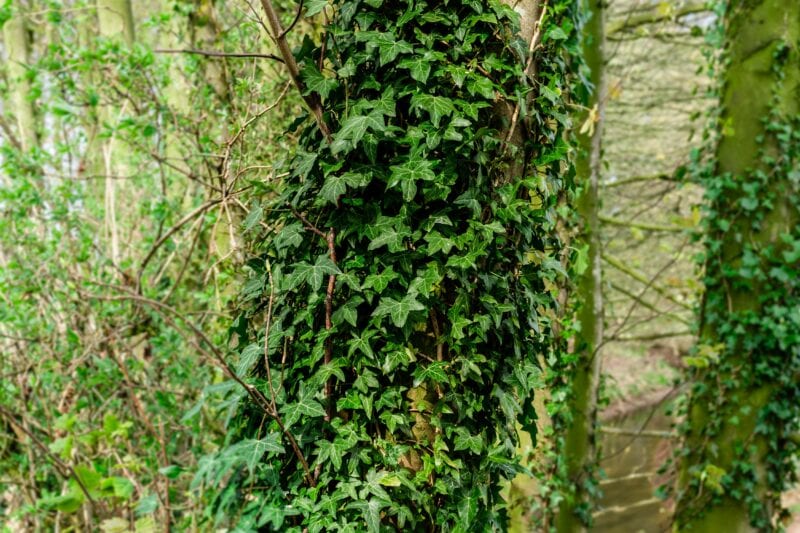
Cleans:
- Benzene
- Formaldehyde
- Trichloroethylene
- Xylene
- Toluene
English Ivy is a clinging ivy from Europe. It can attach itself to walls, chains, and other objects to create unique greenscapes. Be aware that English Ivy can cling to walls and cause damage to wood and other surfaces. Conduct research before allowing English Ivy to grow on surfaces you do not want to be damaged.
Expose English Ivy to moderate light or filtered light. Filtered light means filtered through a window, cut down from blinds, or reflected from another surface. English Ivy does not need to be overwatered. It should be kept in low-heat climates.
Where to buy
- Local Nursery
- Amazon
- Home Depot
Dracaena Fragrans (Janet Craig)

Cleans:
- Benzene
- Formaldehyde
- Trichloroethylene
- Xylene
- Toluene
The Dracaena Fragrans plant is a popular indoor plant that comes from regions in Africa. These are easy to take care of, rarely needing attention. It is considered a difficult plant to kill.
They should be put in indirect or low sunlight; direct light will burn them. They do not like being overwatered or drowned; water them sparingly instead.
Where to buy
- Local nursery
- Amazon
Warneckei Dracaena
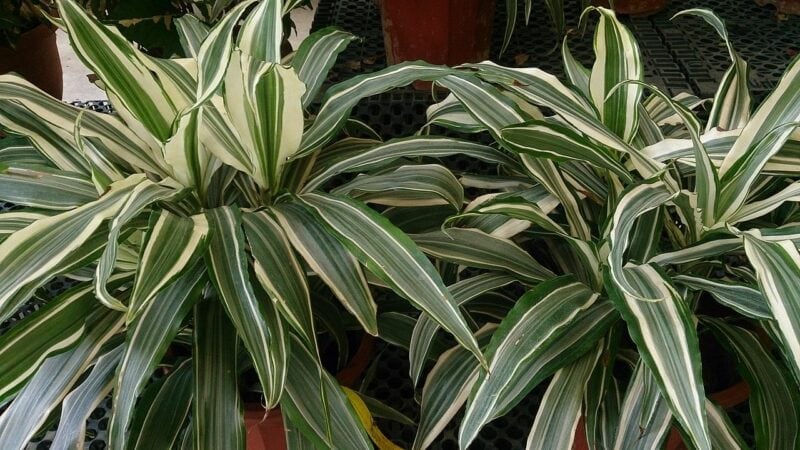
Cleans:
- Benzene
- Formaldehyde
- Trichloroethylene
- Xylene
- Toluene
Dracaena plants are efficient at removing pollutants from the air. The Warneckei is one of four species from the Dracaena family listed here. The Warneckei is originally from Africa.
Avoid direct sunlight, cold temperatures, and do not overwater. Dracaenas should never sit in excess water.
Where to buy
- Local Nursery
Corn Plant Dracena
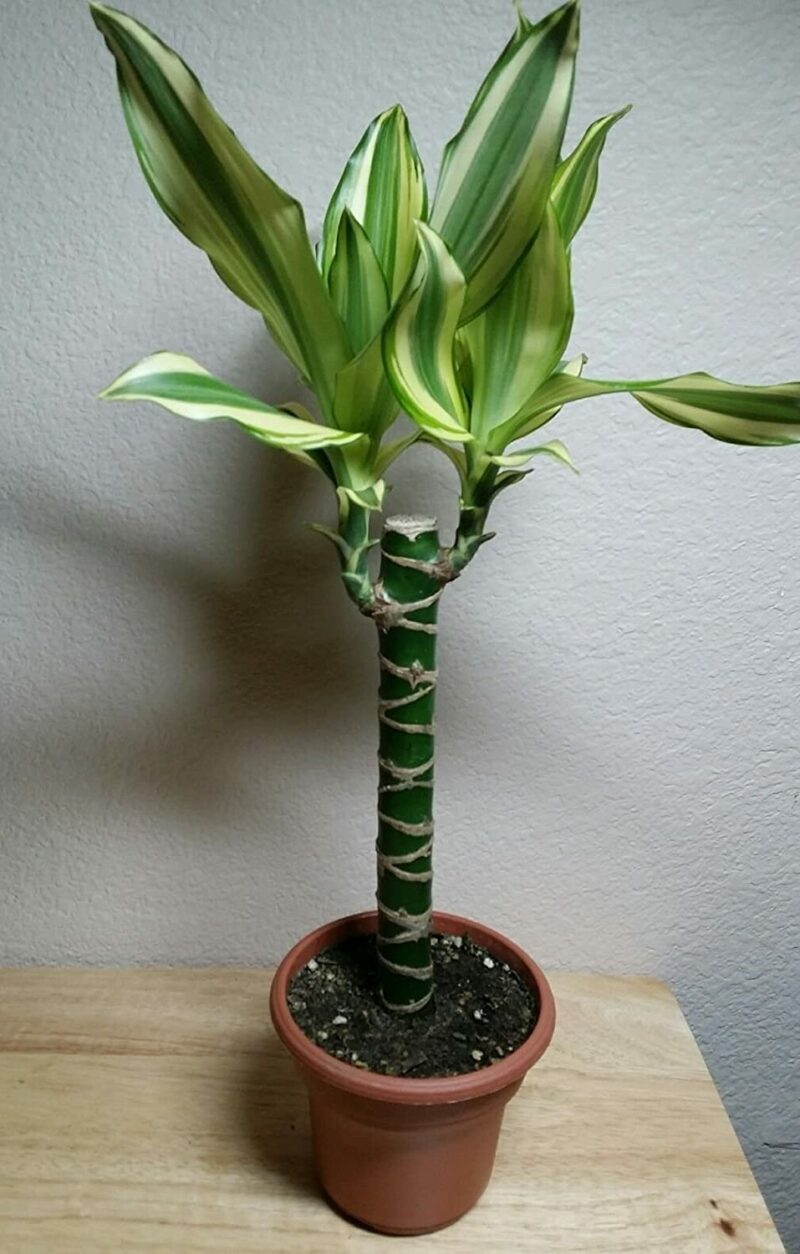
Cleans:
- Benzene
- Formaldehyde
- Trichloroethylene
- Xylene
- Toluene
The Corn Plant Dracena comes from Africa, most known for the thick cane or cornstalk-like, upward-facing leaves.
It prefers indirect sunlight as direct sunlight can burn leaves. The soil should dry completely in-between waterings.
Where to buy
- Local Nursery
- Amazon
Madagascar Dragon Tree AKA Red-edge Dracaena
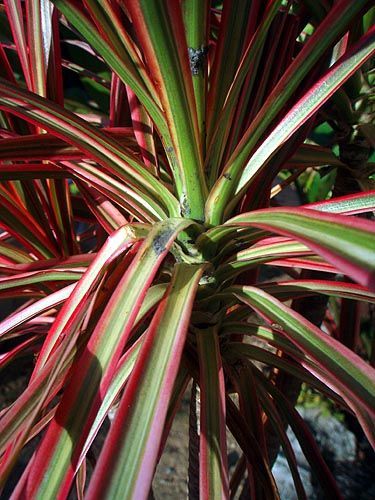
Cleans:
- Benzene
- Formaldehyde
- Trichloroethylene
- Xylene
- Toluene
The dragon tree is an easy-to-grow indoor plant. It can last months without water although not recommended. The Dragon Tree looks like a basic palm with one exception: dragon-red accents. The Dragon tree is native to the Canary Islands, a Spanish autonomous community off the coast of Africa.
Let your Dragon Tree dry out completely between waterings. Use your finger to feel the soil once a week, watering based on lack of water saturation.
Where to buy
- Local Nursery
Barberton Daisy

Cleans:
- Benzene
- Formaldehyde
- Trichloroethylene
The Barberton daisy is a flowering daisy indigenous to Southern Africa. It is also known as the Gerbera Jamesonii, being that the plant is in the Gerbera family.
This flower is a perennial, which means it can live indefinitely. Compare that to the annual flower, which dies every year.
The Barberton daisy, like other plants listed, wants to be watered when its soil is dry. They prefer bright, indirect light and cannot tolerate cold weather making this daisy an indoor daisy.
Where to buy
- Local Nursery
Chinese evergreen
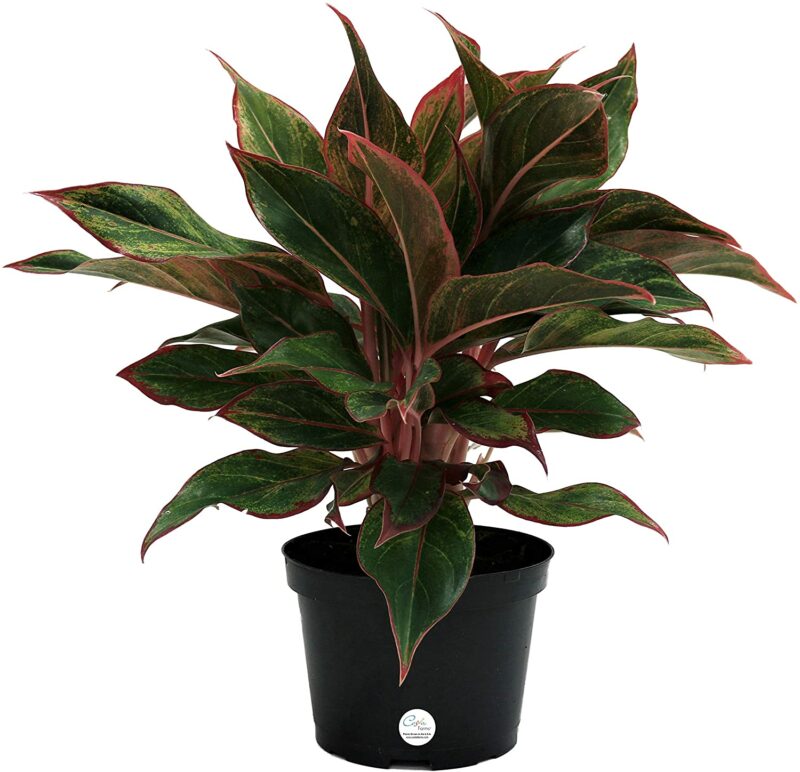
Cleans:
- Benzene
- Formaldehyde
The Chinese evergreen plant has its temperament in its name: Evergreen. Although this plant cleans minimal chemicals from the air, it makes up in hardiness. The Evergreen does well in low-light conditions, poorly in high light conditions, and optimal in medium-light situations. Water when dry using fast-draining soil.
The leaf patterns are beautiful with Dark green edges and tea green splashes centering each leaf.
Where to buy
- Local Nursery
- Amazon
Weeping fig (Ficus)
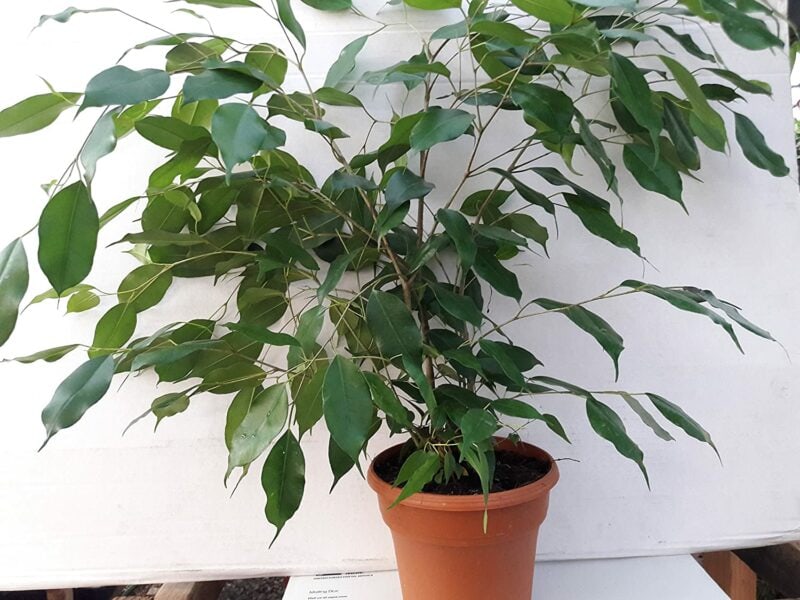
Cleans:
- Formaldehyde
The Weeping Fig is a large growing, green leafy houseplant that most know of as a Ficus, although the true name is Weeping Fig. The weeping fig is native in southeastern Asia, Malaysia, and can grow to be 40ft high in the wild.
The Weeping Fig wants bright but indirect sunlight–indoor light. Water the Fig when the top layers of soil are getting dry.
Where to buy
- Local Nursery
- Amazon
How to use this information
You do not need all of the plants on this list. Consider purchasing a few plants from this list that have high cleaning properties and aesthetics that you would enjoy having in your home.
Although nowhere near as intensive as taking care of a pet, or a child, plants need attention. More plants, more responsibility. Glass bulbs can be used to water plants automatically, but they are fragile, and depending on the plant and its water-intake, they may not last long. We recommend a combination of manual watering and bulb-watering so the bulbs act as a backup in case you forget to water, or cannot for whatever reason.
Bloomscape will give you 20% off your first plant purchase.
Being around nature is shown to increase mood and productivity; for those of us who spend hours indoors, or at a desk, grinding & dreaming, plants can help you get there.

